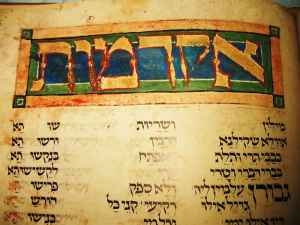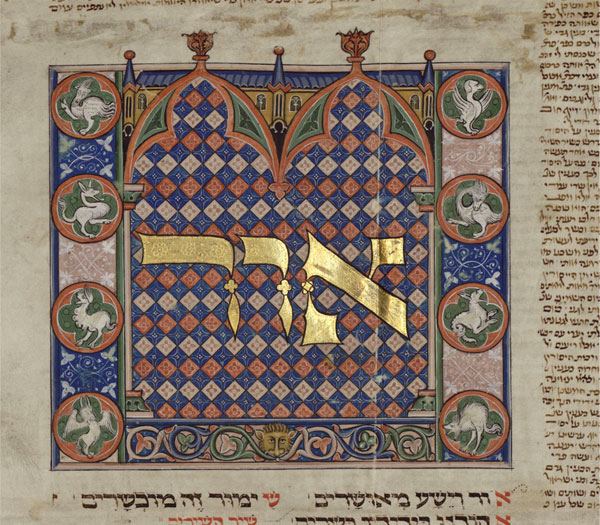At this time of year, many of us are spending much time with our mahzor. While many of us are using the Gates of Repentance, Birnbaum or Koren, (I use the excellent Goldschmidt critical edition) many variations of the liturgy exist in manuscripts in the HUC collection and beyond.
Not long ago, using manuscripts for liturgy research involved traveling to rare book rooms around the world or looking at microfilm in the basement of the National Library of Israel (Department of Manuscripts and The Institute of Microfilmed Hebrew Manuscripts – National Library). Progressively, the digitization of Hebrew manuscripts gives librarians and scholars the opportunity to view manuscripts without leaving one’s chair. The manuscripts or Jewish prayer books are a great resource for Jewish art, liturgy, history and more. Entering “mahzor” or “siddur” into Google gives you the Wikipedia articles (http://en.wikipedia.org/wiki/Machzor and http://en.wikipedia.org/wiki/Siddur), which provide a good introduction to the mahzor and siddur.Once you get oriented, it is time to begin seeing the world of Jewish liturgy on the Web.
You may want to start with the National Library of Israel manuscript collection website that has a few good examples of mahzorim, including the famous Worms Mahzor, copied in 1272.
There is also the beautifully illustrated Nuremberg Mahzor copied in 1331. The website includes an introduction to the manuscripts as well as scholarly articles related to them. (http://www.jnul.huji.ac.il/dl/mss/worms/intro_heb.html and http://jnul.huji.ac.il/dl/mss-pr/mahzor-nuremberg/intro.html)
Another website that includes many manuscripts, including mahzorim, is the Braginsky collection. This is a must-see website for anyone interested in manuscripts. This private collection includes beautifully illustrated manuscripts of Ketubot, Passover Hagadot, Megilot Esther and more. The website allows you to englarge the high-resolution images to see a very fine level of detail.
Another research tool for finding rare books is the HebrewBooks.org website. Just type in Mahzor using the virtual Hebrew keyboard and find hundreds of titles which can all be viewed online or downloaded. Dozens of these mahzorim are from the 16thcentury, which are very valuable in liturgical study.
However, for those of you who prefer to see and touch the manuscripts (like me), the Klau Library in Cincinnati has a good collection of mahzorim including some from the 14thcentury.
Shana Tova!


